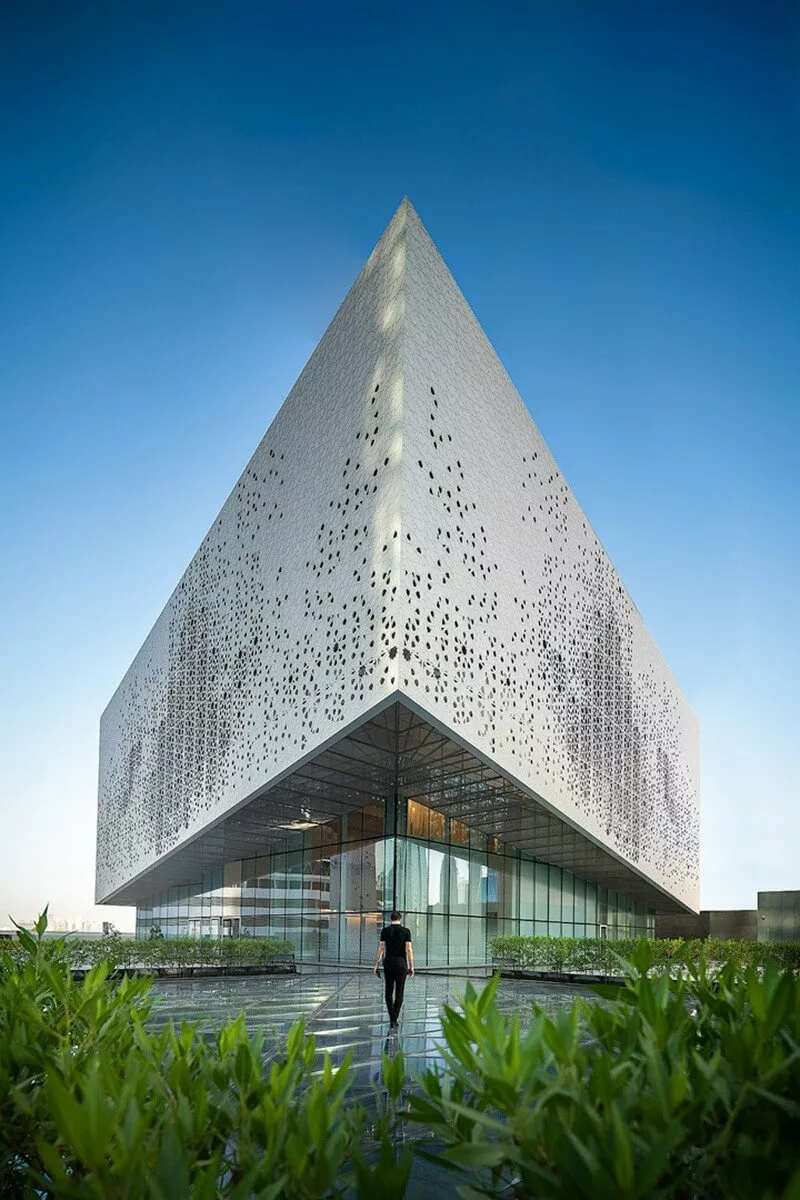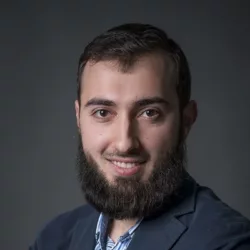
In Conversation with Shoayb Khattab (Photography)

For this interview, we talked to Shoayb Khattab of Shoayb Khattab Photography, winner of the Architecture MasterPrize in the Cultural Exterior category for the project titled “Serenity.”
How do you approach capturing the essence of a building or interior space in your photographs?
Shoayb Khattab: My approach to capturing the essence of a building or interior space revolves around emphasizing human interaction and scale. I firmly believe that incorporating human figures in architectural and interior photographs adds a sense of relatability and context, as buildings are designed with human use in mind.
In addition, I focus on other elements such as lighting, textures, materials, and colors to create a compelling image that brings out the true essence of the space.
Could you discuss a particularly challenging shoot you’ve worked on and how you overcame the obstacles?
Shoayb Khattab: Each project presents unique challenges, but one that comes to mind is a villa project that required staging a family, including a 5-year-old child, within the images. Directing the entire family, especially the child, proved to be quite difficult, and many images appeared unnatural and out of place.
To overcome this challenge, we decided to allow the family more freedom to move and interact naturally. This resulted in more authentic and relatable images that captured the genuine atmosphere of the space.
How do you balance capturing the beauty and functionality of a space in your photographs?
Shoayb Khattab: Balancing the beauty and functionality of a space in photographs requires a thoughtful approach. Incorporating human elements is crucial, as it conveys that the space is designed for living and not just an artistic sculpture. Additionally, I focus on understanding the intended purpose and function of the space, showcasing how its design elements serve that purpose.
By employing various angles, compositions, and techniques, I strive to present the space from multiple perspectives, highlighting both its aesthetic appeal and practical functionality.
How do you balance the needs and desires of the client with your own design vision?
Shoayb Khattab: Balancing client needs and desires with my design vision involves understanding that there are two primary types of images: those that document the space as architectural journalism, and those that showcase the space as fine art. The ideal client hires a photographer based on their unique style and trusts their creative approach.
To achieve this balance, I invest time in understanding the client’s expectations, goals, and requirements while also ensuring that key elements in each project, as specified by the architect, are highlighted effectively. By maintaining open communication and blending the client’s vision with my creative expertise, we can achieve a harmonious balance that results in captivating and impactful photographs.
What advice would you give to young photographers just starting out in their careers?
Shoayb Khattab: I would advise young photographers to continually learn, experiment, and shoot subjects they are passionate about, whether it’s for commissioned work or personal projects. Focusing on developing a distinct niche style will help them stand out and attract clients who appreciate their unique approach.
How do you see photography’s role in architecture and interior design evolving in the future?
Shoayb Khattab: As AI continues to advance and impact various industries, including photography, I believe that AI will serve as a valuable tool that complements and enhances the photographer’s work, rather than replacing their role entirely. In the future, AI-driven technologies may streamline certain aspects of the photography process, but the creative input of an artist in capturing the essence of architectural and interior design projects will remain essential.
Photography will continue to play a crucial role in effectively conveying the essence, functionality, and beauty of spaces while adapting to new technologies and embracing the opportunities they present.
How did you come up with the concept for the project you submitted to the Architecture MasterPrize awards?
Shoayb Khattab: The concept for the project I submitted to the Architecture MasterPrize awards, titled “Serenity,” was inspired by the distinctive features of the DIFC mosque. While capturing the mosque from various angles, I became intrigued by the idea of showcasing the facade’s main characteristics using the widest angle possible.
This led me to include the glass floor in front of the mosque within the frame. Since the mosque was not yet open to the public, there were no visitors present to provide a sense of scale or add a contrasting element to the composition.
To overcome this challenge, I decided to include myself in the shot. This choice demonstrated the project’s scale and created a sense of balance and contrast within the image, resulting in the captivating photograph that became the hero image of the project.

Shoayb Khattab: “I am truly honored to have won multiple architecture photography awards, with the Architecture MasterPrize being a significant one among them. The international recognition I received through AMP has broadened my exposure and opened up opportunities for collaborations on a global scale. This award serves as a testament to my dedication and passion for architectural photography, further motivating me to continue pushing the boundaries and creating visually stunning, impactful images.“
Many thanks to Shoayb Khattab for sharing his insights and experiences with us. Shoayb’s award-winning project “Serenity” exemplifies his ability to create visually stunning images that not only capture the architectural features but also convey a sense of tranquility and impact. His dedication to his craft and his passion for showcasing the transformative power of architecture and design is evident in his work.